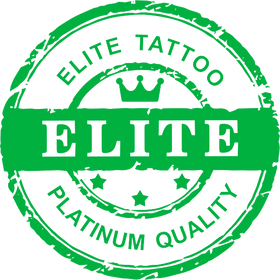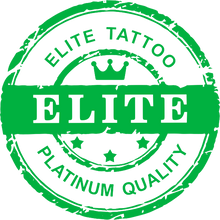Tattoo Needles and Tattoo Machines Aligning for Optimal Precision
Ensuring the alignment of tattoo needles and tattoo machines is crucial for achieving optimal precision in tattooing. This alignment not only affects the quality of the artwork but also the comfort and safety of the client. Let's delve into the specifics of both tattoo needles and tattoo machines, and how to best match them for superior results.
Understanding Tattoo Needles
Tattoo needles are an integral part of the tattooing process, acting as the medium through which ink is deposited into the skin. Their configuration and type play a significant role in the final outcome of the tattoo.
Exploring Tattoo Machines
Tattoo machines are the backbone of the tattooing process, powering the needles that create the artwork. Understanding the different types and features of tattoo machines is essential for matching them effectively with various needle types.
Maintenance and Care for Tattoo Machines
Proper maintenance and care of tattoo machines are essential to ensure longevity and consistent performance. Regular cleaning and lubrication of the machine's moving parts can prevent wear and tear and keep the machine running smoothly. It's important to sterilize the machine parts that come into contact with bodily fluids to maintain hygiene and safety standards. Checking and replacing worn-out components such as O-rings, springs, and armature bars can prevent mechanical failures during the tattooing process. Additionally, storing the machine in a cool, dry place helps in avoiding rust and corrosion, further extending the machine's lifespan.
The Importance of Compatibility
The compatibility between tattoo needles and tattoo machines plays a vital role in achieving the desired tattoo outcomes. Proper matching of these elements can enhance the quality of the work, ensure the comfort of the client, and improve the efficiency of the tattoo artist.
Why Matching Needles and Machines Matters
Matching needles to the appropriate tattoo machine affects the overall performance and results of the tattooing process. Using the right combination can ensure consistent ink flow, minimize skin trauma, and produce precise lines and smooth shading. When needles and machines are not matched correctly, it can lead to irregular ink deposition, skin irritation, and prolonged healing times. Properly aligned equipment also reduces the risk of hand fatigue for the artist, allowing them to work more comfortably and effectively.
Factors to Consider When Matching Equipment
Several factors should be considered when matching tattoo needles with machines to achieve optimal results. The type of tattoo machine (coil, rotary, pneumatic) should align with the needle configuration to ensure smooth performance. The power and stroke length of the machine should also be compatible with the needle type to achieve the desired depth and consistency of ink insertion. Additionally, the style of tattooing (lining, shading, coloring) should guide the selection of both needles and machines to ensure they complement each other for specific tasks. Considering these factors helps in achieving precise and high-quality tattoo work.
Common Issues from Poor Compatibility
Incompatibility between tattoo needles and machines can lead to several issues that impact the quality of the tattoo and the comfort of both the client and the artist. Poor matching can result in irregular ink flow, causing inconsistent lines and patchy shading. It can also increase the trauma to the skin, leading to excessive bleeding and longer healing times. The tattoo artist may experience increased hand fatigue and discomfort due to the inefficiency of the equipment. Ultimately, poor compatibility can compromise the overall tattooing experience and the final results of the artwork.
Guide to Matching Tattoo Needles with Machines
Ensuring proper matching of tattoo needles and machines involves a series of steps that should be carefully followed to achieve the best results.
Steps to Ensure Proper Matching
Assess the Tattoo Style: Determine whether the tattoo requires fine lines, bold outlines, shading, or coloring. This assessment helps in selecting needle types and configurations that align with the specific requirements of the design.
Understand Machine Capabilities: Familiarize yourself with the specific capabilities of your tattoo machine, including its stroke length, power settings, and adjustability. Ensure that these features complement the needle type you intend to use.
Select Compatible Components: Choose needles that are designed to work efficiently with your type of machine. For instance, coil machines are suitable for needles requiring powerful strokes, while rotary machines work well with needles needing smooth, consistent movement.
Test the Setup: Before starting the tattoo, test the needle and machine combination on a practice medium. This step helps in identifying any issues with ink flow, needle movement, or machine performance, allowing you to make necessary adjustments.
Fine-Tune Adjustments: Make precise adjustments to your machine settings, such as voltage and needle depth, to optimize the performance based on the specific needle type and tattoo requirements. Regularly check and tweak the settings throughout the tattooing process to maintain consistency.
Elite Tattoo
The precision of Elite Tattoo's needles is further enhanced by their uniform soldering, which ensures consistent tapering and optimal ink flow. This attention to detail facilitates the creation of crisp lines and seamless shading. Each needle is sterilized using E.O. Gas and individually packaged, adhering to rigorous health and safety standards.
Complementing their needle selection, Elite Tattoo offers advanced tattoo machines, including the ELITE VOLU V2 and ELITE JET, which are powered by robust motors such as the Japanese Motor and FAULHABER Motor. These machines are constructed using CNC technology, which guarantees their structural integrity and consistent performance. The adjustable voltage settings and standard needle protrusion cater to the nuanced preferences of professional tattoo artists, while the RCA connections ensure compatibility with a range of grips, including those from ELITE, Cheyenne, and FK IRON.
The synergy between Elite Tattoo's needles and machines is a testament to the brand's commitment to providing artists with tools that are not only efficient but also harmonious in their function. This alignment is crucial for artists seeking to achieve precise and detailed work, as it allows for a seamless tattooing experience that translates into high-quality artistry on the skin.
Troubleshooting and Enhancements
Even with careful matching, issues can arise during the tattooing process. Identifying and addressing these problems promptly can enhance performance and ensure the success of the tattoo.
Identifying Problems and Solutions
Common problems that may occur include inconsistent ink flow, irregular lines, and excessive bleeding. To address these issues, first check the alignment and configuration of the needle and machine. Ensure that the needle is installed correctly and that the machine settings are appropriately adjusted. If ink flow is inconsistent, verify that the needle configuration matches the ink type and that the machine power is adequate. For irregular lines, adjust the needle depth and machine settings to achieve smoother movement. Addressing these problems promptly can prevent further complications and improve the tattoo outcome.
Advanced Techniques for Enhanced Performance
Experienced tattoo artists often employ advanced techniques to enhance the performance of their equipment. These techniques include customizing the machine settings to suit specific needle configurations for different tattoo styles. Experimenting with different voltage settings and stroke lengths can help in achieving the desired precision and consistency. Additionally, using high-quality, sterile needles and maintaining the machine's cleanliness can significantly improve performance. Continuous learning and practice enable artists to develop a deeper understanding of their equipment, leading to better control and superior tattoo results.
In conclusion, the alignment of tattoo needles and tattoo machines is a complex but crucial aspect of achieving high-quality tattoo work. By understanding the types and configurations of needles, the capabilities of different tattoo machines, and the importance of proper matching, tattoo artists can enhance their precision and efficiency. Regular maintenance and troubleshooting further ensure that the equipment performs optimally, providing a better experience for both the artist and the client.




Dejar un comentario